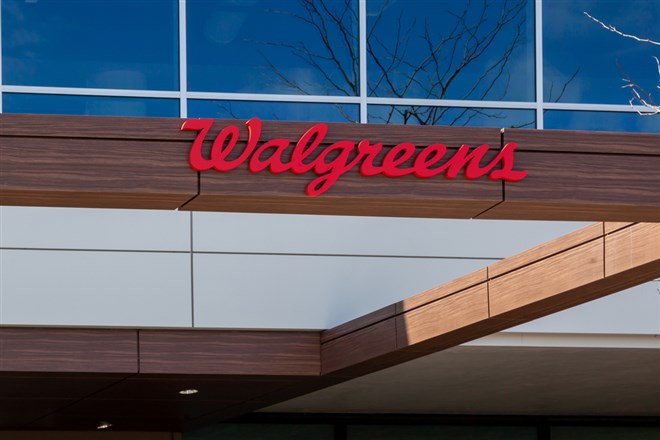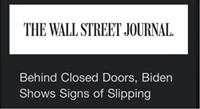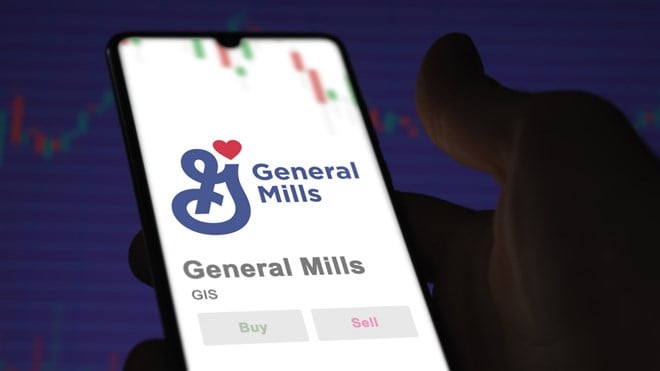TickerTalk Headlines for June 30th
In this newsletter:
Upwork Stock's Outlook: Numbers Solid Despite Gen-AI Challenges
Upwork (NASDAQ: UPWK) is a technology firm that operates as an online marketplace, connecting freelance workers and independent contractors with employers. In 2024, the stock price is down 29% due to fears that AI will eliminate many freelance jobs. Now, most analysts covering the stock have a buy rating on it. Let's look at Upwork's business lines and recent financial results. We'll also explore fears about AI hurting the freelance work model and give an outlook on the firm.
Detailing Upwork's Business Model and Revenue Generation
On its annual filing, Upwork calls itself “the world's largest work marketplace.” It measures this using gross services volume (GSV). GSV represents the total amount those looking to hire (clients) spend on the firm’s offerings, plus fees charged to those looking for work (talent). The firm enabled $4.1 billion of GSV in 2023, 94% of which came from the United States.
The primary form of revenue generation is by deducting a percentage of the talent's pay. The company usually deducts 10% from the contractor's payment.
The company has two offerings directed at clients: Marketplace and Enterprise. Marketplace gives clients access to the site's basic hiring features. Enterprise provides larger clients with more resources to help scale their business using growth and cost-efficiency strategies. They assign dedicated billing, account management, and business analytics teams to clients to drive these strategies.
Two other important points of note: In May 2023, Upwork fired 15% of its employees, mostly in its sales department, and its main competitor is Fiverr (NYSE: FVRR).
Upwork Q1 2024 Earnings: EPS and Revenue Beat, Shares Volatile Despite Strong Metrics
Upwork released its Q1 2024 earnings on May 1, 2024. It beat on both earnings per share (EPS) and revenue. EPS came in at $0.13, two cents above estimates. Revenue came in at $191 million, $5 million above estimates. The share price surged, climbing by almost 9% in a single day. Yet, optimism quickly faded. By the next week, the gain disappeared, and since that release, shares have dropped by 11%. GSV grew 1%, and revenue grew 19% from the last year.
However, the firm’s “take rate” is the most encouraging metric. The firm provides this custom metric, which is defined as the total revenue divided by the total GSV, with minor adjustments. The take rate shows the margin the firm brings in on the value that its clients generate. The take rate for Q1 was 18.9%, which increased 2.9% from the previous year. This is a large expansion in the company’s margins, which is very encouraging. The company also increased the number of active clients on the platform from the previous year by 5%.
Upwork Should Overcome Gen-AI Headwinds
Seeing Upwork’s dramatic price drop over the last year is somewhat puzzling. The share price is up only 6% from Aug. 2, 2023. The S&P 500 is up 22% over the same period. This is despite the firm actually becoming profitable since then, reporting positive earnings over the last three quarters. The stock traded at much higher levels in 2022 when its earnings were negative. Shares are down 52% since July 4, 2023. This is due to concerns about generative AI’s effect on the company, which has driven its shares down while driving the market up.
Opinions about how AI will affect the freelance work model vary. AI will cut many jobs that require low-skill and repetitive work. A recent study showed that since the introduction of Open AI's ChatGPT, job postings for "automation-prone" freelance work dropped 21%. This was particularly pronounced in writing, coding, and image creation. However, the remaining jobs required higher skill levels and paid freelancers more. Although many jobs will be lost, other jobs with different skill sets should replace them.
While concerns about Gen-AI are understandable, Upwork's recent results don’t lie. It doesn’t make sense for the firm to be trading at over 50% less than when it was severely unprofitable. The firm showing its ability to increase its take rate substantially and increase active clients in the face of Gen-AI headwinds makes this even more head-scratching. Analysts agree. The average price target of analysts covering the firm that updated their ratings since Q1 earnings comes in at $17.50, implying a 66% upside.
BUY ALERT: Tiny tech play partners with US government (Ad)
The Federal Reserve is rolling out a powerful new financial technology across the entire U.S. banking system.
It's forecasted to grow 24,290% in the near future...
Meaning, your bank is nearly certain to adopt it (if it hasn't already).
What's Behind Walgreens Stock Plunge: What Investors Can Do Next
After years of a downtrend in their price, shares of Walgreens Boots Alliance Inc. (NASDAQ: WBA) have thrown in the towel this time. In a single day, the stock is down over 25% in a sign that can’t be taken in any other way than a ‘run’ message. However, some remain hopeful about the stock recovering, but that would be severely disconnected from current fundamentals.
Today, investors get a chance to audit the main drivers behind Walgreens and come to a better-educated conclusion as to whether the stock is worth keeping on a watchlist. More specifically, investors should watch the developments between Walgreens and its main competitor, CVS Health Co. (NYSE: CVS), because the trends could not be more apparent.
Last but not least, savvy investors understand that it isn’t just Walgreens and CVS at stake in this turbulent time but also entities that back Walgreens locations, such as its landlords. According to the saying, one man’s trash is another man’s treasure, so here is how to figure out where the real treasure hunt will end up.
Walgreens vs. CVS: Financials Break Down the Competition
There is, of course, a good reason for the price crash on shares of Walgreens, and it’s got everything to do with the company’s financials. For starters, investors can break apart the latest quarterly results to figure out what happened behind the scenes.
While the company’s press release points to earnings per share (EPS) nearly quadrupling, the reality couldn’t be further. Therefore, net income and EPS can be easily manipulated. In contrast, other metrics like free cash flow (operating cash flow minus capital expenditures) cannot.
This is why investors should focus on that instead, and here’s what they would find: a net operating outflow of $314 million, minus $1.1 billion in capital expenditures, for a negative free cash flow of over $1.3 billion. Since a company cannot run without cash flow, seeing what management did next makes sense.
The plan is to close a ‘significant’ amount of Walgreens locations, assuming they are unprofitable. While this could free up some cash and cut overhead expenses, it won’t be enough to offset the unprofitable operations that lie at the heart of the company.
Because Walgreens has no free cash flow, it cannot fund its operations further without taking on debt or diluting shareholders. Because of this, the stock’s 8.2% dividend yield should be nothing short of a red flag to investors, a bait to avoid.
On the other hand, here’s what can be said about CVS’s financials. The company’s latest quarterly results show investors operating cash flow of $4.9 billion, leaving them with positive free cash flow even after $705 million in capital expenditures. What management chose to do with this capital was also the right thing.
Up to $3 billion was set aside to repurchase stock, compounding the upside effects for existing shareholders. This trend must be why analysts at J.P. Morgan Chase saw it fit to boost CVS’s valuations to $86 a share, daring it to rally by 47.2% from where it sits today.
Now that the dust is settled, investors can zoom out of this dramatic price action and find themselves with the next best thing, Walgreens’ landlord Realty Income Co. (NYSE: O), a real estate investment trust (REIT) known for paying monthly dividends instead of quarterly.
The Best Income a Dip Can Buy: Realty Income Stock
As Walgreens’ landlord, Realty Income stock is exposed to the closure of hundreds of locations. However, markets habitually exaggerate things, so here’s just how exposed they really are.
According to Realty Income’s latest quarter, the company only derived 3.4% of its rental income from Walgreens. This is not significant enough to justify a more than 1% sell-off in an otherwise low-volatility stock.
When the market realizes how little this event means for Realty Income, it will be too late for investors to squeeze a potential discount. Speaking of discounts, the stock’s valuation is so low that its annual dividend yield has jumped to 6%, the highest in company history (excluding COVID sell-offs).
According to those at Stifel Nicolaus, Realty Income stock is worth up to $65 a share, daring it to rally by as much as 24% from where it trades today. More than that, Wall Street still expects to see 3.8% EPS growth in Realty Income this year, keeping up with inflation and GDP growth.
Biden's inner circle turns against him? (Ad)
On August 19, the Democratic party will take the stage in Chicago and officially nominate their presidential candidate for the 2024 election.
But it's possible their nominee will NOT be Joe Biden.
General Mills Stock Drops After Revenue Miss in Fiscal Q4 2024
General Mills (NYSE: GIS) lies within the consumer staples sector and ranks in the top 10 largest food and beverage companies in the United States by revenue. In 2024, the share price is essentially where it started for the year, with a total return of just under 0%.
But it hasn’t simply been trading sideways. Year-to-date returns went up into the 12% range in April and May, but fell significantly over the past five weeks. Since releasing its fiscal year 2024 earnings on the morning of Jun. 26, shares have fallen by over 5%. Let’s look at General Mills' business lines, recent financial statements, and future outlook to contextualize this reaction and analyze its prospects going forward.
General Mills’ Business Segments and Products
General Mills lists four segments in its annual report: North America Retail, International, Pet, and North America Foodservice. The firm controls more than 100 unique brands, including Cheerios, Bisquick, and Häagen-Dazs, and operates in over 100 countries. The North America Retail segment is by far the largest, accounting for 77% of operating profit. The company's Pet segment comes in at 12%, North America Foodservice at 8%, and International at 3%.
North America Retail focuses on many food products, including ready-to-eat cereals, frozen foods, and shelf-stable vegetables. The firm’s primary customers are grocery stores and mass merchandisers. Due to the nature of its business, input costs for its products can fluctuate widely based on the prices of commodities like wheat, corn, sugar, and other agricultural products.
The report states that while seasonality affects some product sales, overall demand remains generally balanced throughout the year.
General Mills' Earnings: Earning Per Share Beat, Revenue Miss, and Dividend Increase
Earnings per share (EPS) came in slightly above the consensus $0.99 estimate at $1.01. The firm missed revenue considerably, coming in at $4.71 billion versus $4.85 billion expected. Over the full year, net sales were down 1%, but adjusted operating profit grew by 4% despite this. An increase in net price realization and mix drove this. This means the company was able to charge higher prices for its products, net of any discounts provided. Although the firm sold at higher prices, lower sales volume offset this, resulting in a decrease in revenue in the end. A $241 million reduction in SG&A expenses boosted adjusted operating profit.
Yet, on a quarterly basis, compared to Q4 2023, both revenue and adjusted operating profit showed meaningful declines. Revenue was down 6%, and adjusted operating profit was down 10%. Adjusted diluted EPS was also down 10%. A big disappointment came with the international segment. The firm reported a 68% decline in operating profit from Q4 2023. Brazil's and China's harsh environments contributed significantly to this outcome. In Brazil, customers heavily reduced inventory. In China, a downturn in consumer sentiment in the second half of the year seriously harmed sales of the firm's premium brands like Häagen Dazs.
Another notable point from this release relates to the firm's dividend. The firm announced an increase in its dividend, raising its dividend yield to 3.74%. Increases like this are not uncommon, as the company’s dividend has grown by 4.5% annually over the last three years. The firm offers a solid return of capital to investors in the form of income that's more than double its industry average. The average dividend yield for Processed & Packaged Goods firms sits at 1.8%.
General Mills' Fiscal 2025 Outlook: Gradual Volume Recovery and Cost Savings Expected
General Mills predicts that it will gradually recover from sales volume declines over fiscal 2025. It also hopes to drive continued savings in cost of goods sold (COGS) of 4% to 5%. This will be achieved through its Holistic Margin Management program (HMM), which allowed the firm to mitigate inflation in 2024. It expects this level of savings will increase margins as it sees COGS inflation being in the range of 3% to 4%.
But it doesn’t expect to increase earnings significantly. The guidance midpoint shows adjusted diluted EPS remaining flat over fiscal 2025. Six analysts updated their ratings after the release. Their average price target for the stock is $68. This implies a 7% upside from the Jun. 27, 2024, closing price.
Elon Musk's chilling warning for humanity (Ad)
The 'invasion' I've discovered has nothing to do with the border crisis. What's happening at our southern border is a travesty, but the 'invasion' I've found will have 10 times greater effects on our economy, and ultimately our way of life.
Go here to see why. >





没有评论:
发表评论